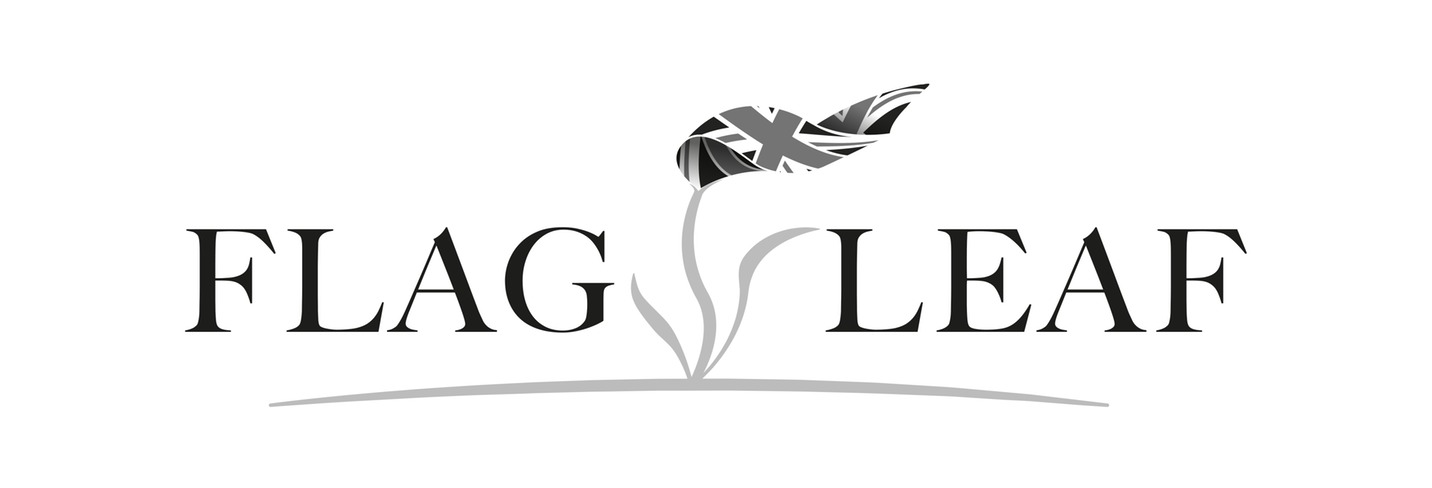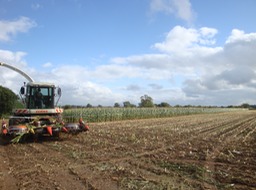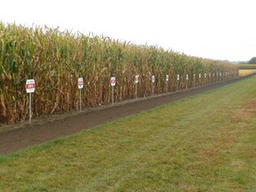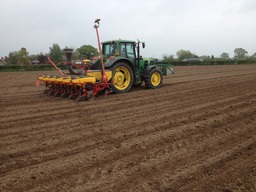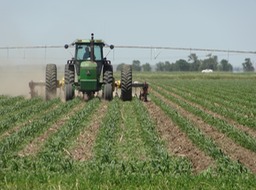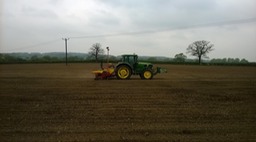Weed control in maize is the number one concern, maize can be easily smothered by strong competition in the spring for light, water and nutrients.
Weed control has become increasingly difficult since the loss of atrazine, which was a pre and post emergent one stop shop for weed control in maize. Making the process a whole lot more testing in a country where active ingredients are becoming more scarce and less effective.
Maize being a spring crop, gives the polygonem weeds (red shank, black bindweed, pale perscaria and knotgrass) a great opportunity to germinate between the 75 cm wide rows of the maize crop. Along side the polygonem weeds there is also various grass weeds including annual meadow grass, rye grass, couch grass, barnyard grass and wild oats. Other broad leaved weeds including fat hen, charlock, cleavers and black nightshade which are also to be controlled. The down side of using maures to feed maize crops means the weed seeds can be easily distributed. The most important measure to take is keeping these crops free of any form of weeds.
Cultural controls are our first line of defence.
- Rotation is a simple way of stopping the build up of these difficult to control weeds. Use a break crop to widen the control window for difficult weeds.
- Site selection - avoid fields with high risk of resistant weeds.
- Cultivate to stimulate weed growth then destroy with cultuvations
- Pre drilling glyphosate (roundup) to destroy any green leaf
- Most weeds germinate from top 5cm so ploughing will make it harder for them to surface
- Clean machinery (plough, forage harvester) between fields to prevent any spread of weed seed
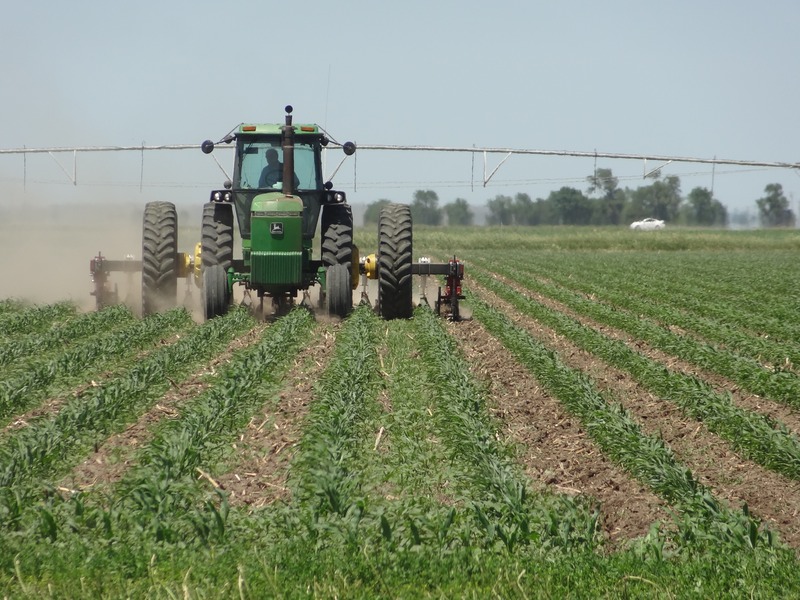
A great cultural contol is inter row cultivation. (see right). The machine cultivates the soil between the rows of maize destroying any weeds in its path. This operation is widely used in the USA and other parts of the world but not here in the UK. Partly to do with the size of fields and machine availability. This operation could save the UK farmers a fortune and avoid using some chemical controls. However this is an excellent choice for organic growers wishing to grow maize
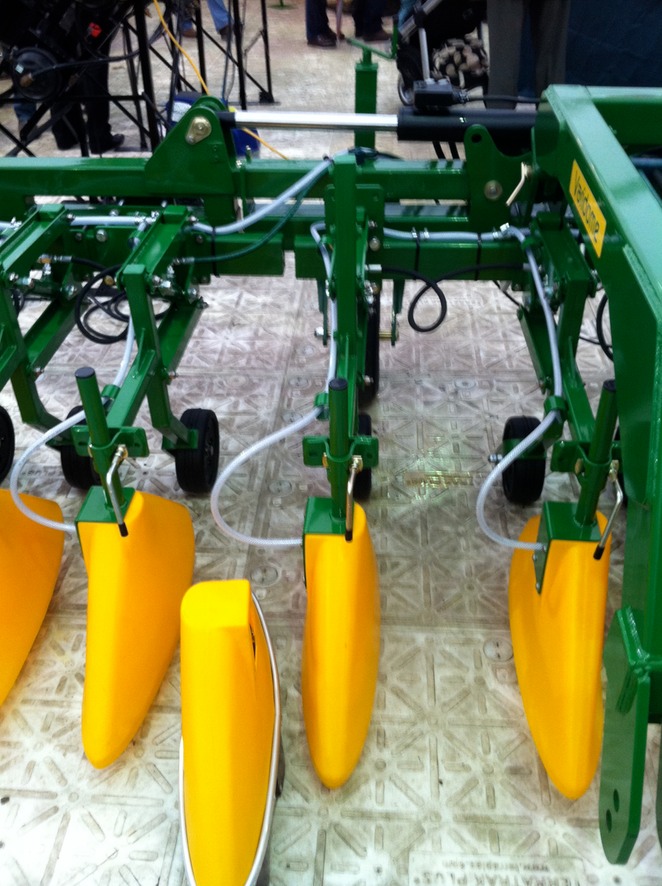
There are other options including hooded sprayers (see left) but again not common here in the UK. The machine sprays glyphosate (roundup) between the rows, the hoods are to prevent the drift of the glyphosate onto the maize leaves. Not a cultural control but a very effective cheap way of controlling all weeds in the crop. It could be particularly useful for growers on a two spray herbicide programme. The hooded sprayer could be used when the crop is small and sensitive to herbicides. When the maize is sprayed post emergent with a large dose of herbicide, it can have a spell of turning yellow and loosing growth for 1-2 weeks if the weather turns cold. Using a hooded sprayayer would prevent this by applying the herbicide exactly where it is needed.
There are only chemical control options when it comes to weed control in maize so a moist, fine and firm seed bed is critical to promote the emergence of the crop. It also aids the use of residual chemistry if it is to be used.
The residual options in maize is just five active ingredients
- Pendimethelin ----Stomp, PDM, Fastnet, Wing P
- Flufenacet + iosxaflutole ---- Amethyst
- S-Metolachlor ---- Dual Gold, duel star, clayton smelter
- Dimethenamid-p = pendimethalin ---- Wing P, clayton launch
All of these products are good at supressing grass weeds and broad leaved weeds. Flufenacet it expensive but very good at controlling difficult grass weeds. Wing P can be a useful product but is expensive like dual gold. Pendamithalin is a low cost pre emergent spray which can be used in conjunction with any of these other products for a low cost effective pre em.
The advantage of using a pre-emergent is that it will give the crop a head start from the weeds, making the weeds more sensitive to the follow up post-emergent spray. The timing is not such an issue for the post-emergent spray and it can be done when conditions are right.
Some of the post emergent active ingredients are
- Mesotrine - Calliso, Calaris (broad leaved weds and some grasses)
- Nicosulfuron - Samson, milagro (grasses and some broad leaved weeds)
- Bromoxynil - Butryflow, Alph bromotril (fat hen, red shank)
- Fluroxypyr - Starane, cal gone, hurler(cleavers, black bindweed)
- Prosulfuron - Peak, kibo (Knotgrass, ragwort)
Most one spay programmes are based around mesotrine and nicosulfuron (samson+callisto) the callisto can be swapped for calaris (mesotrine & terbuthylazine) for more residual control. Or a two spray programme could be just Calaris (mesotrine & terbuthylazine) which has good control over a wide range of broad leaved weeds and grasses.This is then followed by Samson(nicosulfuron) when the crop is green between the rows again. For difficult to control weeds such as knotgrass, peak(prosulfuron) will be needed or black bindweed and cleavers are easily killed with starane (fluroxypyr).
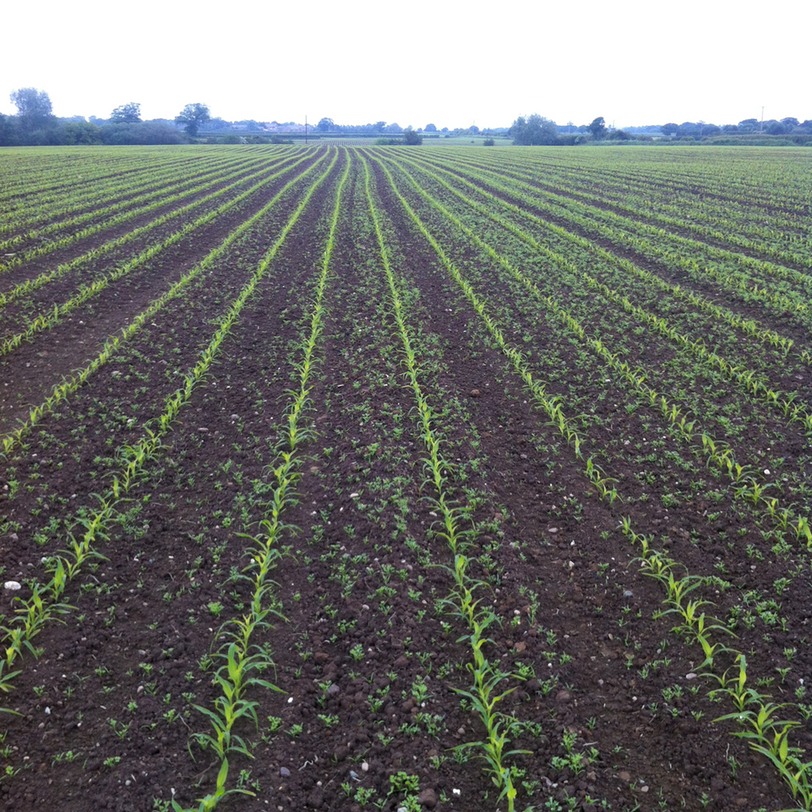
When the crop is showing green between the rows (see right) this is a great time to be spraying. The weeds are not competing with the crop and only take a small dose or herbicide to kill off this first flush of weeds.
There are far more options for post emergent weed control but timing is critical.
Below red shank
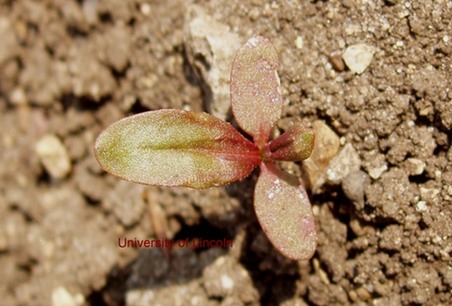
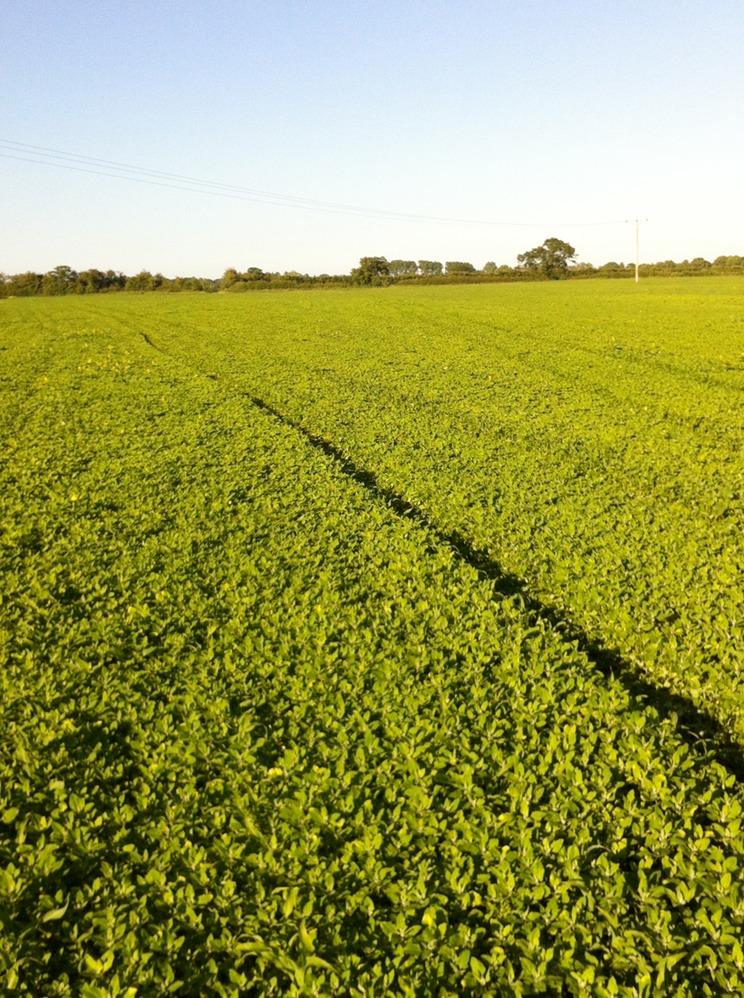
If the timing is delayed to try and save money on a one spray post-emergent strategy it can go badly wrong (see left a crop smothered by fat hen). If the weather turns wet or windy and spray timings can be delayed by 2 or 3 weeks this can easily happen. Although the fat hen is easily controlled with bromoxynil, the crop will loose 2 - 3 weeks sunlight, delaying growth and the crop will not reach its full potential. A one spray strategy can be a risky business, timing is critical.
Below fat hen
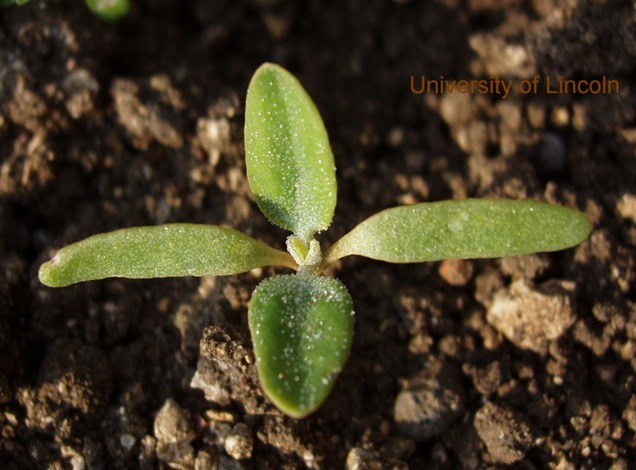
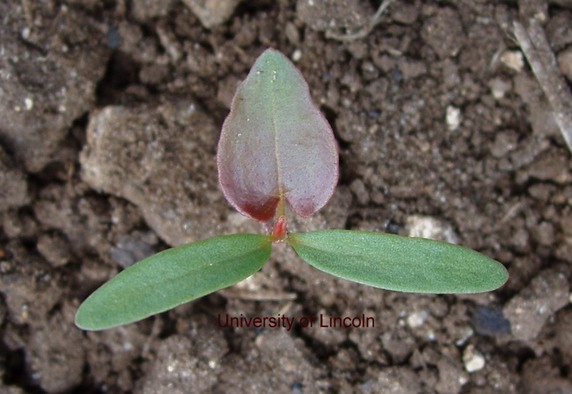
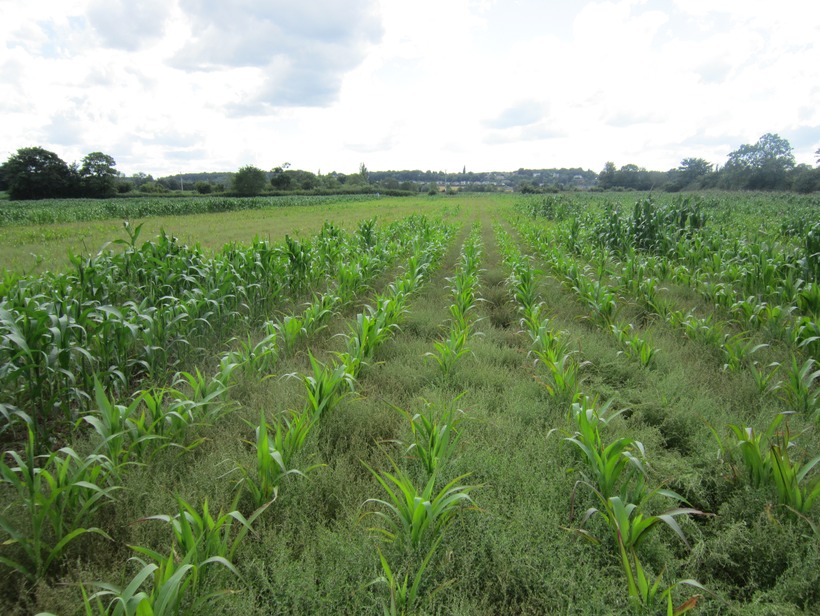
Black bindweed above
Maize is uncompetative, especially in the early stages so weeds must be controlled. See right knotgrass takes hold of a maize crop and will not allow the crop to grow more than a few feet high. A combination of poor management decisions and bad spray timings led to a disaster for this farmer.
Below and right Knotgrass
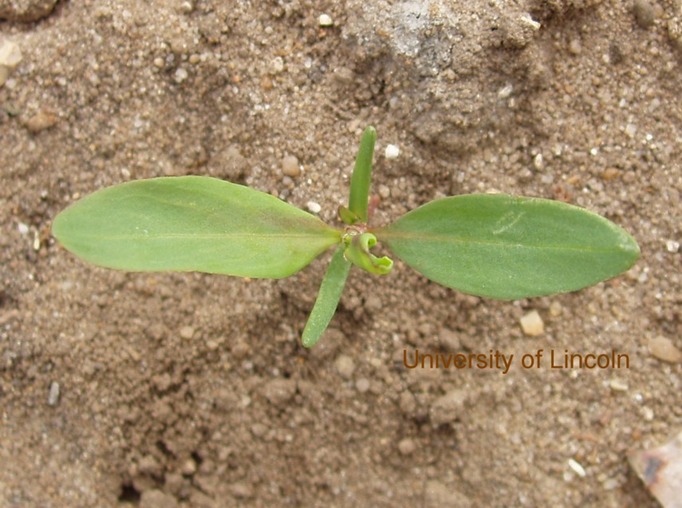
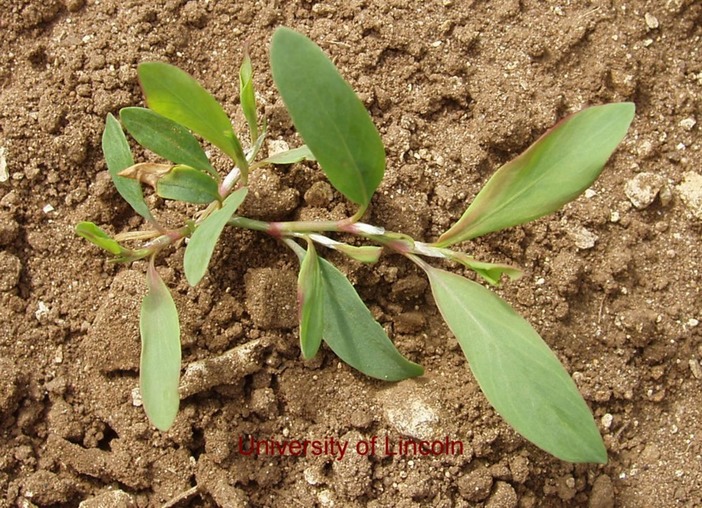
A two spray strategy is now employed by the majority of maize growers. A cheap pre emergent containing pendemithalin can be enough to supress the weeds for long enough to give a more flexible timing for the all important post emergent spray. If a pre emergent cannot be applied then crops should be sprayed when green between rows, better too early than too late, a follow-up application can always be applied with some foliar nitrogen.
Heathy maize crops are free of competition for light, nutrients and water.
